Disposable cameras are a fun, easy way to capture memories without having to worry about developing the film or prints. But for first-time users, they can seem a little daunting. How do you use them? What settings should you use? What kind of pictures will you get? In this article, we’ll answer all those questions and more! We’ll provide a comprehensive guide on how to use disposable cameras, as well as some tips on how to take great photos with them.
What Are the Disposable Cameras?
Disposable cameras are single-use cameras that come preloaded with a roll of film. They are a popular choice for casual photographers and are often used in situations where a regular camera might be damaged or stolen but when you still want to snap some memories, such as at nightclubs or on beaches.
Most disposable cameras have a built-in flash that can be used for indoor and outdoor photography. Some models also have an optical viewfinder that makes it easier to compose your shots. Usually disposable cameras come with a 35mm film, which is a standard size for photography.
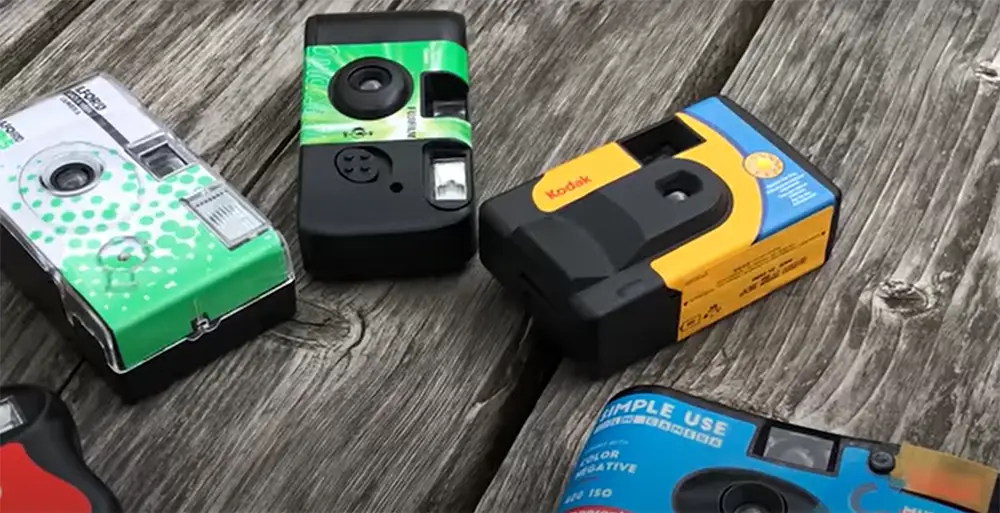
However, the picture quality from disposable cameras is not as good as from regular cameras, so they are not ideal for serious photographers. This is because they lack the fixed focus, have slower shutter speed, bad low-light performance and their lenses are made of plastic that is prone to scratching.
The most popular disposable camera type is the film camera, but there are also digital disposable cameras. The main difference between these two types is that with a film camera you have a limited film to use, while a disposable digital camera has a limited storage that you can’t expand with a SD card. Also with disposable digitals, you can transfer your photos without much trouble, simply by using USB while disposable film cameras require you to send the film to the special studios.
Disposable digital cameras however, aren’t as popular as their film counterparts mainly because of the price factor.
There are waterproof disposable cameras that can be used for taking photos while swimming or snorkeling. These types of cameras are ideal for vacations and trips to the beach.
When it comes to prices, disposable cameras are very cheap, with most models costing less than $20. However, the price of developing film can vary depending on where you live and how many photos you want to develop. [1], [2], [3], [4]
Disposable cameras are relatively simple to use. However, there are a few things you should keep in mind when using one. In the section below, we will cover everything you need to know about how to use a disposable camera and get pitch perfect photos every single time!
Step-by-Step Guide on How to Use the Disposable Camera
Check if the film is installed
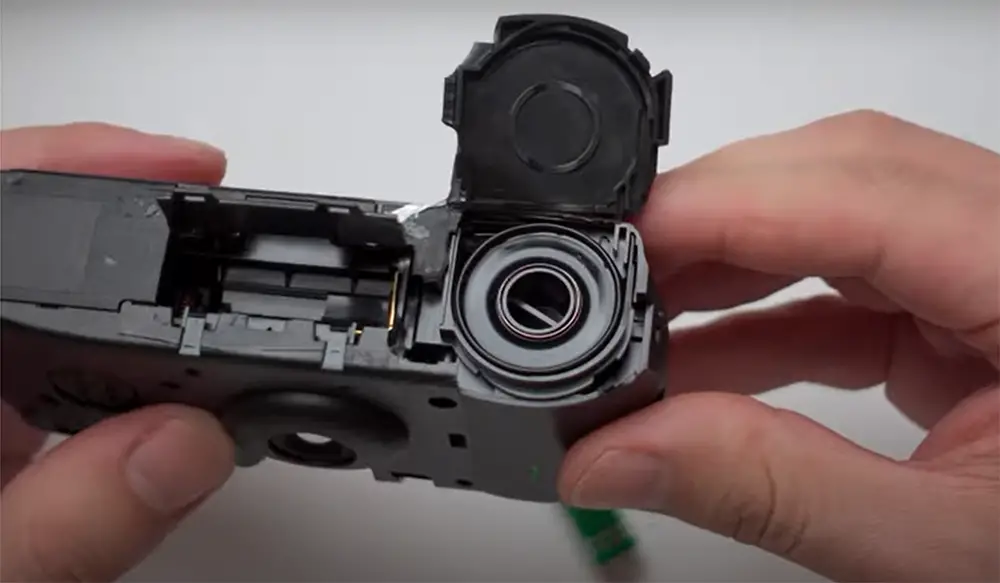
To do this, simply open up the camera and take a look inside. You should see a roll of film with a small knob on one end. If you cannot see any film, then it means that the camera does not have any loaded and you will need to insert it yourself. For example, some of Kodak’s disposable cameras come without the film installed and it’s required to insert it manually.
While you’re at it, check if the battery is installed as well. Simply open the camera and look for the battery compartment. It’s usually on the side or at the bottom of the camera. If there are no batteries in place, replace them and close the compartment.
If the camera does have film and batteries all set, then you can proceed to the next step. [3], [5]
Set the flash
The next thing you will need to do is to set the flash. Most disposable cameras have a built-in flash that will help you both with indoor and outdoor photography. To set the flash, simply look for the switch on the top of the camera and slide it to the “Flash On” position. [3], [5]
Scroll through the film with winding gear
Now, the next thing you will need to do is to scroll through the film with winding gear. To do this, simply locate the small wheel on the side of the camera and turn it clockwise. Keep turning until you find an empty frame. [3], [5]
Hold Camera Up to Your Eye
Once you have found an empty frame in your film, the next thing you will need to do is to hold the camera up to your eye. To do this, simply raise the camera up to your eye level and look through the viewfinder.
Either way, once you have composed your shot, simply press down on the button located on the top of your camera to take a photo. The shutter will open and close, notifying that the photo has been taken.
After taking a photo, remember to turn the winding gear so that you can advance to the next frame, and go on to finding your next object! [3], [5]
Tips on Taking Pictures With Your Disposable Camera
To get the most out of your disposable camera, it’s important to know a few tips and tricks. Here are some things to keep in mind when taking pictures with your disposable camera!
Hold Still
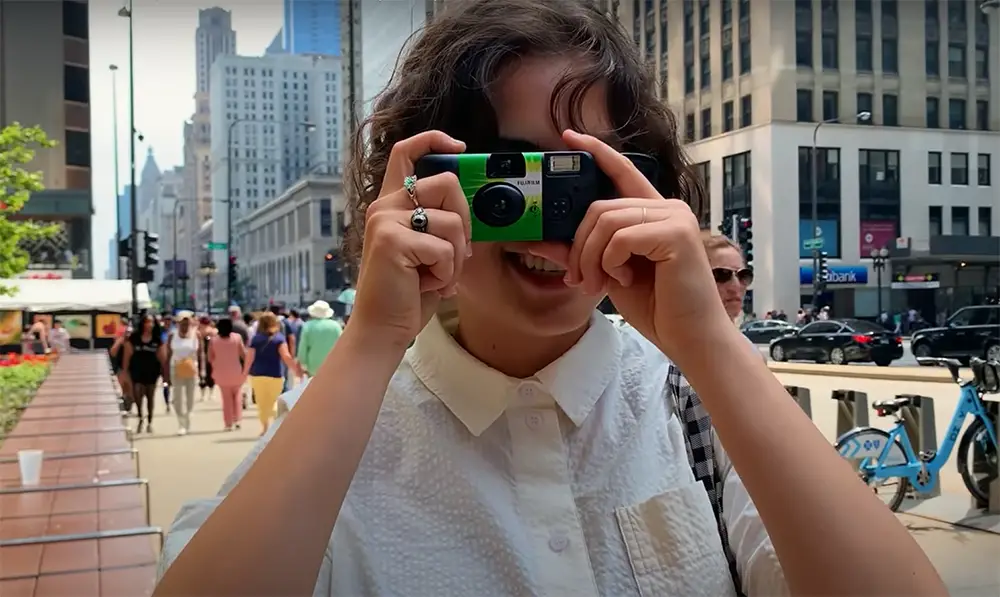
One of the most essential things to keep in mind while using a disposable camera is to hold still, trying to limit your motions. This is because the cameras don’t have image stabilization, so any movement will result in a blurry photo. This also will help prevent blurry photos. You certainly don’t want to waste the precious film. [3]
Keep in Mind Lightning Conditions
This is because the ISO of the film is generally low, around 400 in most cameras. This means that the film isn’t sensitive to light, so you’ll need bright conditions to get good results. It comes to no surprise for a camera as cheap as this.
But overall, if you keep lighting conditions in mind when taking pictures with your disposable camera, you should be able to get some pretty good shots!
Utilize Flash
Another tip is to use the flash whenever possible. The flash can help to brighten up your photos and make them look better, especially in low-light conditions. However, you should be careful not to use the flash too much, as it can also wash out your subjects and make them look bleached. And avoid taking pictures of objects that can reflect the flash back, ruining your photo! [1]
Focus Manually
The focus of a disposable camera is usually pretty bad. This means that you’ll need to do all the focusing by yourself. The best way to do this is to get close to your subject and only in that way you will get a better shot.
If you’re trying to take a picture of something far away, it’s probably not going to turn out well. Disposable cameras are best for taking pictures of things that are close up. [1], [2]
How to Get Pictures Out of Your Disposable Camera?
The first thing you need to do is locate a film development lab. Once you have found a lab, take your camera and roll of film to the counter. The staff will be able to process your film and print out the pictures for you.
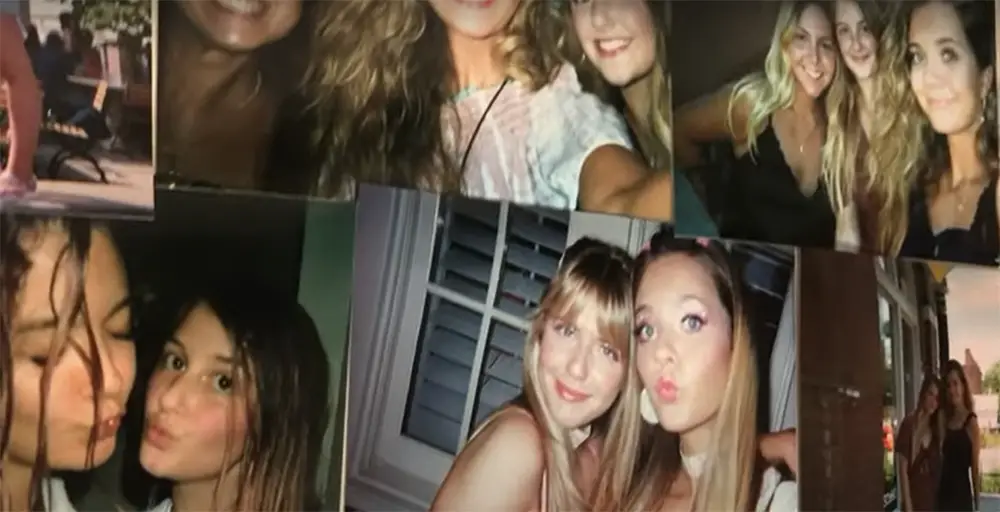
It’s important to note that not all labs develop disposable camera film. But if you’re having trouble finding a place to get your pictures developed, you can always try an online service like Filmology or The Darkroom. [2], [3], [4], [5]
Can You Use a Disposable Camera More than Once?
The answer is surprisingly yes! You can actually disassemble the camera and reload the film as many times as you want. However, consider that disposable camera hardware is cheap and it won’t last as long as a professional camera would. [2], [5]
Check more guides about disposable cameras:
- How to Get Disposable Camera Pictures On Your Phone?
- How to Reset Instax Mini 9 Camera?
- How to Scan Polaroids?
FAQ
When should you use flash on a disposable camera?
There’s no need to be afraid of using the flash on a disposable camera! In fact, using the flash can help to create some really great photos because disposable cameras tend to have a film with ISO 400. This makes flash necessary to get some nice looking pictures in dark or night.
How do you get pictures off a Fujifilm disposable camera?
To get pictures off a Fujifilm disposable camera, you’ll need to take the film out of the camera and have it developed. You can either do this by taking it to a local photo lab. Once the film is developed, you’ll be able to scan the photos onto your computer so that you can print them out or share them online.
How many photos can you take on a disposable camera?
The answer to this question depends on the brand of disposable camera that you’re using. However, most disposable cameras come with 24 or 36 exposures. This means that you’ll be able to take 24 or 36 photos before you need to get the film developed.
Can you develop an expired film?
Yes, you can develop an expired film. However, there’s no guarantee that the photos will turn out well. If you’re looking to get the best possible results, it’s always best to develop a film that hasn’t expired.
What are some tips for taking better pictures with a disposable camera?
Here are a few tips to get the most out of your disposable camera:
- Plan your shots. Take a few minutes to think about what you want to capture before you start snapping away. This will help you make the most of the limited number of photos you have.
- Pay attention to the lighting. Disposable cameras often don’t perform well in low light, so try to take advantage of natural light whenever possible.
- Keep your hands steady. Since disposable cameras don’t have image stabilization, it’s important to hold them as still as possible when taking a photo. Use both hands if necessary.
- Avoid zooming in. Most disposables only have a fixed focal length, so zooming in will just make your photos blurry. Instead, move closer to your subject.
- Use the flash sparingly. The flash on a disposable camera is often not very powerful, so it’s best to use it only when absolutely necessary.
Can disposable cameras be used for professional photography?
The answer is yes, but there are some things to keep in mind. Disposable cameras typically have a lower quality lens and a smaller aperture. This means that the images will not be as sharp and the depth of field will be shallower. However, disposable cameras can still be used to produce great results if you are aware of their limitations and know how to work around them.
What are some things to avoid when using a disposable camera?
Some things to avoid when using a disposable camera include: not shaking the camera, not leaving the lens cap on, and making sure the film is properly wound. Also, be careful when using flash as it can sometimes cause overexposure. When taking photos outdoors, try to avoid direct sunlight as it can also cause overexposure. If possible, use a tripod or other support to keep the camera steady. And finally, make sure to develop the film as soon as possible after taking the pictures.
Should you always use flash on disposable cameras?
No, you should not always use flash on disposable cameras. Depending on the scene and lighting conditions, flash may or may not be necessary. If the subject is within range and there is adequate light, then you likely won’t need to use flash. However, if the subject is further away or in low light, then using flash will help ensure that your photos turn out well. Experiment with different settings to see what works best in different situations.
Why are my disposables blurry?
The number one reason your disposables are blurry is because you’re not holding them still enough. Disposables are designed to be lightweight and easy to use, but that also means they’re more susceptible to movement. The best way to avoid blurriness is to hold the camera as still as possible, either by bracing it against a solid surface or using both hands to keep it steady.
Another common cause of blurriness is using the flash when there’s not enough light. The flash can help illuminate a dark scene, but it can also create glare and reflections that make your photos look fuzzy. If you’re taking pictures indoors or in low light, try turning off the flash and see if that helps improve the clarity of your shots.
Finally, make sure you’re not zoomed in too far. The digital zoom on most disposables can make your photos look pixelated and blurry, so it’s best to avoid using it if possible. If you must zoom in, do it sparingly and only when absolutely necessary. With these tips in mind, you should be able to take much clearer disposable camera photos that you’ll be proud to share with friends and family.
Are disposable cameras worth it?
This is a question that we get asked a lot, and our answer is always the same: it depends. If you’re simply looking for a way to take snapshots without having to worry about losing an expensive piece of equipment, then yes, disposable cameras are definitely worth it. However, if you’re hoping to produce high-quality images, you’ll probably be better off investing in a more sophisticated camera.
That said, there are still plenty of reasons why you might want to use a disposable camera. They’re often given away for free at events like weddings or corporate functions, which makes them an appealing option for anyone who doesn’t want to spend money on photography equipment. And even though the quality of the images isn’t as high as it would be with a digital or DSLR camera, disposable cameras can still be used to capture some great moments.
How long do disposable cameras last?
On average, a disposable camera can last anywhere from 24 to 36 exposures. Once all the pictures have been taken, the camera will need to be disposed of.
To get the most out of your disposable camera, it is important to know how to use it properly. Here are some tips:
- Make sure you have enough light. Disposable cameras rely on natural light, so if you’re trying to take a picture indoors or in low light, it’s not going to turn out well.
- Be patient. Disposable cameras don’t have an instant preview function like digital cameras do, so you won’t be able to see how your picture turned out right away.
- Frame your shots. Since you can’t see a preview of your picture, it’s important to make sure that everything you want in the frame is actually in the frame.
- Be careful with the flash. Disposable cameras have a built-in flash that will go off automatically in low light conditions. If you’re trying to take a picture of something close up, the flash can sometimes wash out the details.
Why do people use disposable cameras?
People use disposable cameras for a variety of reasons. Some people prefer the convenience of not having to worry about recharging batteries or downloading pictures. Others appreciate the fact that they can simply throw away the camera when they’re done with it. And then there are those who enjoy the retro appeal of using a disposable camera.
Can you reuse disposable cameras?
No, you cannot reuse disposable cameras. Once you have taken the photos, the film is exposed and can no longer be used. You can, however, develop the film from a disposable camera and then scan the images into your computer so that you can print them out or share them online. To do this, you will need to take the camera to a photo development shop. They will process the film and then give you back prints or a CD with digital files of your photos. Prices for this service vary, but it is typically around $15-$25 per roll of 24 or 36 exposures. So, while you cannot reuse the actual camera, you can still get use out of your photos by having them developed.
Why are disposable cameras so expensive now?
The average price for a disposable camera is now around $45, which is quite expensive when you compare it to the cost of a digital camera. There are still many people who prefer the disposable cameras because they are easy to use and you don’t have to worry about losing your photos. If you’re going on vacation or want to take some pictures at a party, then a disposable camera is a great option.
Do teenagers like instant cameras?
The answer may surprise you. Though most teens today have grown up with digital cameras, many of them are now rediscovering the fun of using a disposable camera. Disposable cameras are easy to use and inexpensive, making them a great option for anyone who wants to try their hand at photography.
Which is better, Kodak or Fujifilm?
This is a question that has been asked since the early days of disposable cameras. There is no definitive answer, as each brand has its own strengths and weaknesses. However, in general, Kodak cameras are better for outdoor photography, while Fujifilm cameras are better for indoor photography. When choosing a disposable camera, it is important to consider the type of photos you want to take. If you plan on taking mostly outdoor photos, then a Kodak camera would be a good choice. If you plan on taking mostly indoor photos, then a Fujifilm camera would be a better choice. Once you have decided which brand of disposable camera is right for you, it is time to start using it!
Useful Video: how to use disposable cameras
Conclusions
So, there you have it—everything you need to know about disposable cameras! Disposable cameras are a great way to capture memories without having to worry about buying an expensive camera. They’re also really compact and easy to use, which is why they’re perfect for parties or other occasions when you don’t want to lug around your DSLR. Before using them, make sure to set the flash before shooting and stay as still as possible while taking your photos. And don’t forget, the closer you are to your subject, the better the picture will be. After using all the film, hurry to the photo lab and develop them to share with everyone later on. Happy snapping!
References:
- https://thedarkroom.com/disposable-camera-tips/
- https://www.belindajiao.com/blog/disposable-film-camera-guide
- https://continentalcamera.com/how-to-use-kodak-disposable-camera
- https://photodoto.com/are-disposable-cameras-any-good/
- https://nesop.com/how-to-use-a-disposable-camera/





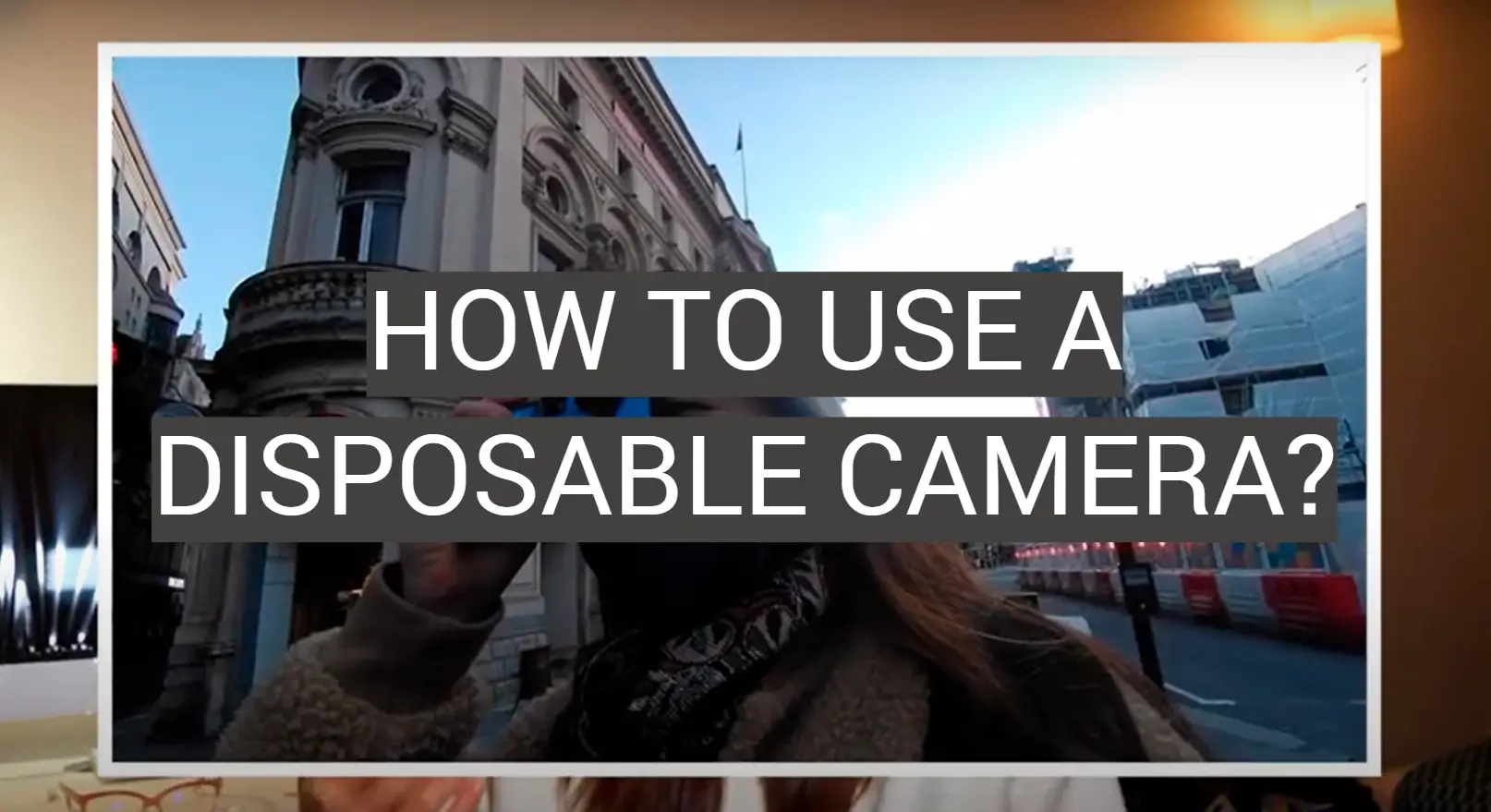
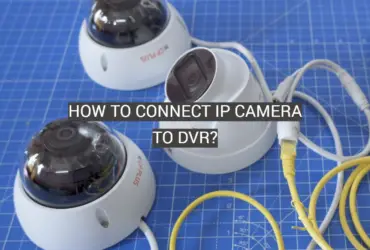
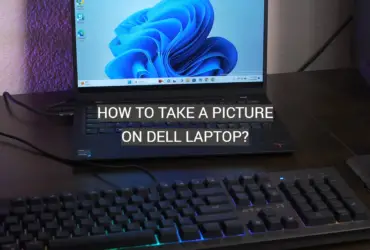


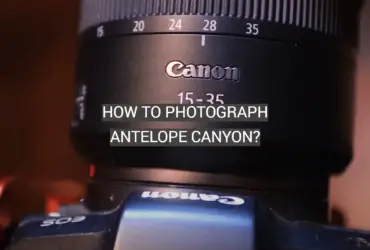
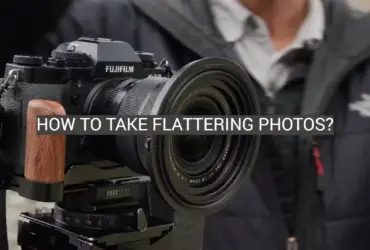
I remember the first time I ever used a disposable camera. It was back in middle school and my best friend had invited me to go on a beach trip with her and her family. I was so excited to have the chance to capture some memories of my own.
The process is pretty simple. Just make sure you have enough film in the camera, then point and shoot! You’ll want to be careful not to shake the camera too much, as that can cause blurry photos.
Once you’re done taking pictures, you’ll need to develop them. You can do this at a photo lab or at home with a developing kit. I usually take my disposable cameras to a photo lab because it’s faster and I don’t have to worry about getting the chemicals right.
Developing your photos is a really fun process, and it’s so exciting to see your images come to life. It’s definitely something I recommend doing if you have a disposable camera!
I find that disposable cameras are a great way to capture memories, especially when you’re not sure how many pictures you’ll want to take or you don’t want to worry about losing or damaging your camera. I’ve found that most disposable cameras have between 20 and 24 shots, so it’s a good idea to snap a few test shots before your big event to make sure you’re getting the shots you want.
I’ve used disposable cameras a lot – probably more than the average person. I’ve never had any problems with them, but I know other people who have had bad experiences with them. I think you can get a lot of good pictures out of them if you’re careful and take your time. I usually get around 25-30 pictures out of each camera.
I’m not really sure what the appeal of disposable cameras is. I mean, they’re expensive, and you don’t get to see the photos until they’re developed, which can take a while. But I guess some people just like the feeling of taking photos and not having to worry about them.
There are a few tricks you can use to make the most of disposable cameras, though. One is to take a lot of photos in succession, so you have a better chance of getting at least one good one. Another is to take photos from different angles, so you have more options when it comes to choosing the best one. And finally, try to find interesting things to photograph – things that aren’t necessarily beautiful but that tell a story or capture a moment in time.
A disposable digital camera is a great way to capture memories without having to worry about losing or damaging your camera. I like to use disposable cameras for vacations and other special occasions, since I know I can just toss it once I’m done and not have to worry about it. The process of using one is pretty simple – just turn it on and start taking pictures! You can review the photos you’ve taken by pressing the playback button, and when you’re finished, just pop out the memory card and plug it into your computer to save the photos.
I love disposable cameras! They are so easy to use and perfect for capturing memories on vacation or during a special event. Here are my top tips for using disposable cameras:
– Make sure you have enough film. Most disposable cameras come with 24-36 shots, so make sure you have enough film to last the length of your trip or event. You can usually buy more film at your local drugstore.
– Be mindful of lighting. It’s best to take disposable camera photos outdoors or in well-lit areas. The photos taken indoors might not come out as well.
– Take your time. Disposable cameras are meant for capturing memories, so take your time and snap away!
When I was younger, disposable cameras were the coolest thing ever. You could take them anywhere, and there was no worrying about whether you’d get your pictures back or not. I remember taking my disposable camera to the beach and capturing some amazing memories. The best part was being able to see the photos right away and share them with everyone. Although digital cameras have since replaced disposable cameras, I still think they’re a fun way to capture memories.
I don’t really remember how many photos a disposable camera can take, but I remember that it’s a lot. I think it might be like 24 or something. I took a lot of photos with mine. Most of them were of my friends and family, but I also managed to get some good shots of the city. It was a lot of fun taking photos with a disposable camera. I’d definitely recommend it to anyone looking for an easy and fun way to take photos.
I remember when disposable cameras were first released to the public. They were advertised as a convenient and affordable way to take pictures. You could buy a camera, use it, and then throw it away without having to worry about developing the film or returning the camera to the store.
I decided to give disposable cameras a try and was quickly disappointed. The cameras were not only expensive, but they also produced poor quality photos. It was frustrating to spend money on a camera that produced such poor results. I eventually stopped using disposable cameras and switched back to my regular camera.
Despite my bad experience, disposable cameras are still popular today. Many people find them convenient and affordable. If you decide to use a disposable camera, be sure to read the instructions carefully so that you get the best results possible.
I’ve tried developing expired disposable cameras in the past and it’s always been a bit of a hit or miss. Sometimes the pictures come out great, while other times they’re completely ruined. I think it has to do with the age of the film inside the camera. If it’s been sitting around for too long, the chemicals degrade and the pictures come out looking either foggy or completely black. So, if you want to give it a try, I would recommend going for ones that have expired within the last year or so.
I find that disposable cameras are great for capturing candids or quick shots of friends and family. One thing to keep in mind, however, is when to use flash. If you’re indoors, you’ll likely want to use flash to ensure a well-lit photo. Outdoors, however, too much flash can wash out the subject’s features. So, try to experiment with different levels of flash depending on the lighting conditions.
I’ve found that the best way to use a disposable camera is to take your time and experiment with different angles and compositions. I usually start by taking a few test shots to get a feel for the light and the surroundings. Once I have an idea of what I want to capture, I’ll start snapping away.
Since disposable cameras are already preset to shoot in auto mode, there’s not much guesswork involved in taking great photos. Just make sure to keep an eye on the light and adjust your camera settings accordingly. And don’t forget to have fun with it!
I don’t often use disposable cameras, but I decided to give it a try for my recent vacation. I was really happy with the results! The pictures came out bright and colorful, and they were really easy to use. I just pointed and clicked, and didn’t have to worry about messing with any settings. I would definitely recommend them for anyone looking for an easy way to take pictures on vacation.
I’ve found that disposable cameras can last anywhere from a few days to a couple of weeks. It really depends on how often you’re using it and what type of photos you’re taking. If you’re just taking a few snaps here and there, the camera will likely last longer. But if you’re using it more frequently and taking lots of shots, the film might run out sooner.
If you’re like me, you probably haven’t used a disposable camera in years. They’re kind of a pain to use–you have to take the film out and develop it yourself. But if you want to capture a moment and don’t have a regular camera on hand, they’re a great option. Here’s how to do it:
1. Open the back of the camera. There should be a little latch that you can pull open (it might take a bit of force).
2. Remove the film cartridge. The film will be wound around a spool inside the cartridge. Be careful not to touch the film itself.
3. Develop the film. This can be done at most drugstores or photo labs.
4. Put the cartridge back in the camera. Make sure that the film is properly wound around the spool, and close the back of the camera.
I’m not sure if disposable cameras come with film anymore, but I know that they used to. I had a couple of disposable cameras back in the day and I always had to purchase the film myself. The process was pretty simple – you just had to remove the cap on the top of the camera, insert the film, and then close it back up. Once you finished taking all your photos, you would then have to take the film to be developed.